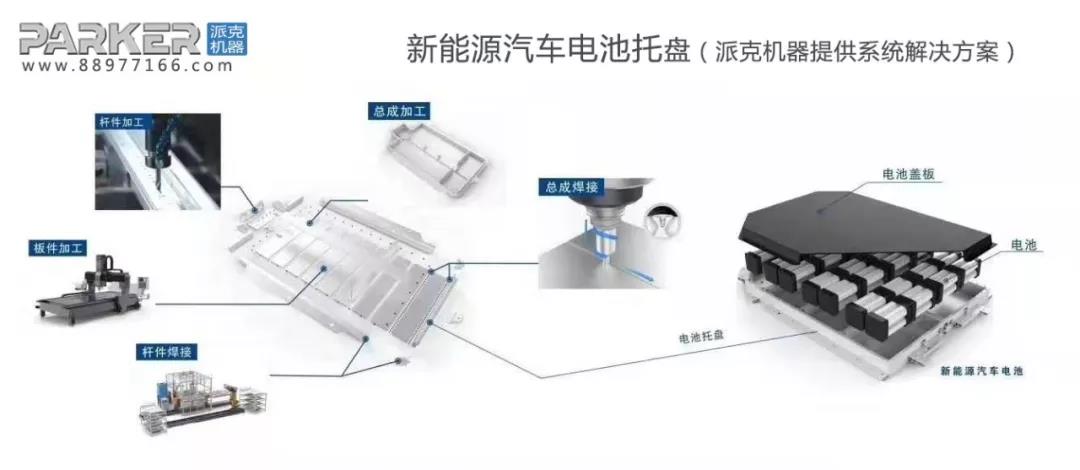With the rapid development of economy, automobiles have become our good travel partners. New energy vehicles have also become an inevitable trend of development. Speaking of new energy vehicles, Xiaobian has to lead you to look at the battery tray of new energy vehicles. What secrets does it contain?
Because of the contradiction between the weight defect and the energy density requirement of the new energy vehicle power battery, the lightweight requirement is particularly urgent in the whole vehicle parts subsystem. In power batteries, pallets account for 20-30% of the weight of the battery system, and they are the main structural components. Therefore, on the premise of ensuring the safety of battery function, pallet lightweight has become one of the main improvement goals of battery structure components.
In terms of material synthesis, aluminium alloy material can first meet the structural requirements of vehicle parts including battery system, and is still the preferred material to replace some steel structures. However, the high strength steel plate itself is also taking the road of lightweight technology. Therefore, aluminium alloy materials and lightweight high strength steel sheets have been showing a state of gluing forward on the road of material selection.
Aluminum and Steel Sticking Forward
With the development trend of energy saving and environmental protection, aluminium is generally the main scheme for enterprises to achieve lightweight, and its price is higher. However, its excellent processability, low density (aluminium alloy density is 2.7g/cm), corrosion resistance, high recyclability and other characteristics have obvious advantages, and it is still light for new energy vehicles to achieve electrification. An important indicator of the quantification process.
Duke Global Consulting surveyed and predicted the average aluminium consumption of North American vehicles. They found that the application of aluminium in vehicles has been increasing year by year since 1996, and has been rising since 2012. Aluminum content in vehicles reached 400 pounds per vehicle in 2015 (181 kg per vehicle), more than 450 pounds per vehicle in 2020 (204 kg per vehicle), and more than 550 pounds per vehicle (249 kg per vehicle) in 2028.
Although the trend of lightweight development and application of aluminium alloy is clear and clear, the cost factors still restrict its great strides forward. On the contrary, it is advantageous to low cost high strength steel, which is manifested in application moisture regain. Designers of Volkswagen's MEB platform have also indicated that they need to choose low-cost steel plates, and that new energy vehicles are not just "wealthy fashions".
In fact, one material can not completely replace another material. Any kind of material, no matter from the angle of cost and performance, has its own advantages and develops in parallel. It can only be said that a material, in one way, can better meet the needs of technological or market development.
It can be seen from the above that although aluminium material has shortcomings, it has become the main material of battery pallets for new energy vehicles, thus reducing the total amount of cars. As a manufacturer of battery pallet production line for new energy vehicles, Parker Machine provides a complete set of solutions for the processing and manufacturing of battery pallets to meet the accuracy requirements of battery pallets. Parker Machine's Machining Center processes the rods and plates of new energy automobile battery pallets for customized pneumatic processing fixtures, and the gantry Machining Center processes the whole welded base precisely.





